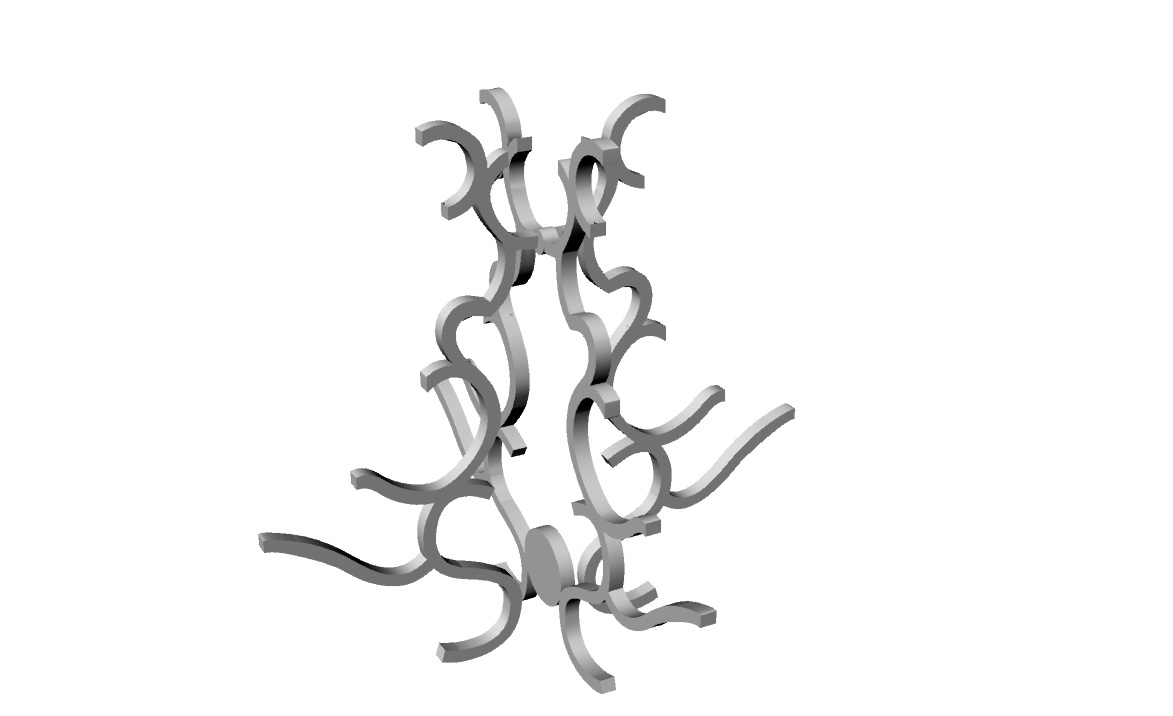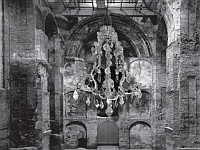ORSHI
DROZDIK
Un Chandelier Maria Theresa
Museum Kiscell / Municipal
Picture Gallery
Templespace, Oratory
December 3rd 2009 – January 24th 2010
Curated by Anikó B. Nagy
Orshi Drozdik (born 1946) is a
Hungarian feminist artist, based in New York.
Her work consists of series of installations exploring connected themes,
sometimes over many years. Her works Individual Mythology (1975-77) and
Nude Model (1977), comprising performance, photography, offset prints and
drawings, were exhibited in Budapest. The Pornography (1978) series was
completed in Amsterdam, I Try To Be Transparent (1980) performance and
the Double (1980) in Toronto.
Her installation series
Adventure in Technos Dystopium (1984-1993) deconstructed scientific
representations of truth. For this series the artist created a fictional 18th
century female scientist called Edith Simpson.

Her installation series entitled Manufacturing the Self (1993-97) is a deconstruction of medical representations of the female body. Her 1993/4 exhibition Medical Erotic, part of the Manufacturing the Self series, featured a cast of the artist's body alongside photographs of a medical wax-work figure and a fictional journal.
In the series of Lipstick Paintings ala Fontana (2002-06) the surface of canvases are punctured with lipstick. The series of digital prints Venuses, Drapery and Bodyfolds (2000-2007) featured fragments of draperies and naked women from the history of painting.
As for the artistic intentions regarding her present show in the Templespace of the Kiscell Museum we may rely on her own words:
In my chandelier project the
individual perception overlay the cultural interpretation, situated within a "Poetic
Model" or a "Historic Communication Model". The chandelier is at
 ones
the surface of perception and symbolic representation. The fissure on reality,
that reveals the trauma, what loses its "reality" once it is symbolized (made
into conscious concept) through images. The chandelier project is the aesthetic
ordering of experience and the conscious effort to express its meanings in
symbolic terms. I use symbols to imply ideas. My main objective is to construct
a synthesis of the real, the idea, and the imaginary, and so bring into
existence a personal symbolism.
ones
the surface of perception and symbolic representation. The fissure on reality,
that reveals the trauma, what loses its "reality" once it is symbolized (made
into conscious concept) through images. The chandelier project is the aesthetic
ordering of experience and the conscious effort to express its meanings in
symbolic terms. I use symbols to imply ideas. My main objective is to construct
a synthesis of the real, the idea, and the imaginary, and so bring into
existence a personal symbolism.
In the historic realm of the Maria Theresa crystal chandelier the structure and decoration was unified, through the process of creating the project, I have separated the two, thus later it get reunified. Mapping the imaginary it becomes the internalized image of this idea and situated around the notion of coherence rather than fragmentation. The imaginary becomes the "signified" the concept symbolized arbitrarily by a sign. I trusted the symbol that I arrived at, in the making of the painting of the chandelier.
Mountains are symbols of something greater, something worth aspiring to. Mountains are powerful, dangerous, beautiful, noble and mysterious. Mountains get respect. So all symbols has similar effect, the chandelier too…
Orshi Drozdik, November 2009
The Maria Teresa crystal chandelier
A chandelier is typically formed
of a frame member from which a plurality of glass or crystal ornaments are
suspended to form an overall ornamental appearance. One type of conventional
chandelier is known as the "Maria Theresa" style chandelier. The Maria Theresa
style is one of the most well-known chandelier styles. 
The Maria Theresa style chandelier is characterized in part by a frame assembly having one or more rigid frame members that are bent into various shapes to create the shape of the chandelier. Maria Theresa chandeliers are further characterized by glass parts, referred to as "listels" or "baguettes" attached to the frame members. Listels typically have a narrow rectangular profile and are attached to opposing sides of the frame members. The relative dimensions of the listels and frame members are such that the surrounding glass listels obscure the underlying frame member from view, giving the appearance of a chandelier that is constructed entirely of glass.
Manufacturing and construction
of a conventional Maria Theresa chandelier is a very time consuming and
labor-intensive process. The blowing and extrusion process is performed manually
and is often a tedious and error-prone process. In addition, it is difficult to
manually produce numerous glass tubes 200 which all have the same dimensions

The founder of the traditional Bohemian crystal chandeliers is considered Josef Palme (1705-1747).
The original seat of the company, founded in 1724, was in Prácheň (Bohemia), near the city of Steinschoenau (today: Kamenický Šenov). Already in 1724, founding year of the company, a six-arm chandelier was delivered to Schloss Hof near Vienna. Today, this masterpiece is on show in the museum for applied arts in Vienna.
In 1727 Louis Quinze, King of France, ordered the production of a Palme crystal chandelier.
That same year the Brussels palais of Grandduchess Maria Elisabeth of Austria, governor of the Austrian Netherlands was furnished with Palme chandeliers.
One of the most well-known classic crystal chandeliers is the famous "Maria Theresa" chandelier. This chandelier, first produced by the Josef Palme manufacture in 1746 for the Austrian Empress. When Josef Palme died in 1747, his younger brother Christoph took over the family company and turned it into Christoph Pallme & Co. in 1751.
As early in 1754 the palace of Turkish Sultan Oman III. was furnished with a Palme chandelier. In 1756 Palme crystal chandeliers from Bohemia were delivered to the court of the Russian Tsarina Elisabeth.
In 1859 the company and its facilities were moved to Haida (North Bohemia).
Today, the palaces of the Sultans of Brunei, of the Kings of Saudi Arabia and of the Sheiks of the Gulf States are beautified by worlds-famous Palme chandeliers. But Presidents also enjoy the sparkling sheen of Palme chandeliers, as for example in the White House in Washington, at Schloss Bellevue in Berlin and in many other European government buildings.
On the occasion of the 1929 world exposition in Barcelona the world's oldest crystal chandelier manufacturer Christoph Palme received special recognition: a gold medal for the finest chandelier.
After the Second World War the Palme chandelier manufacturers were forced to leave their native land. They established new manufacturing facilities in West Germany.
